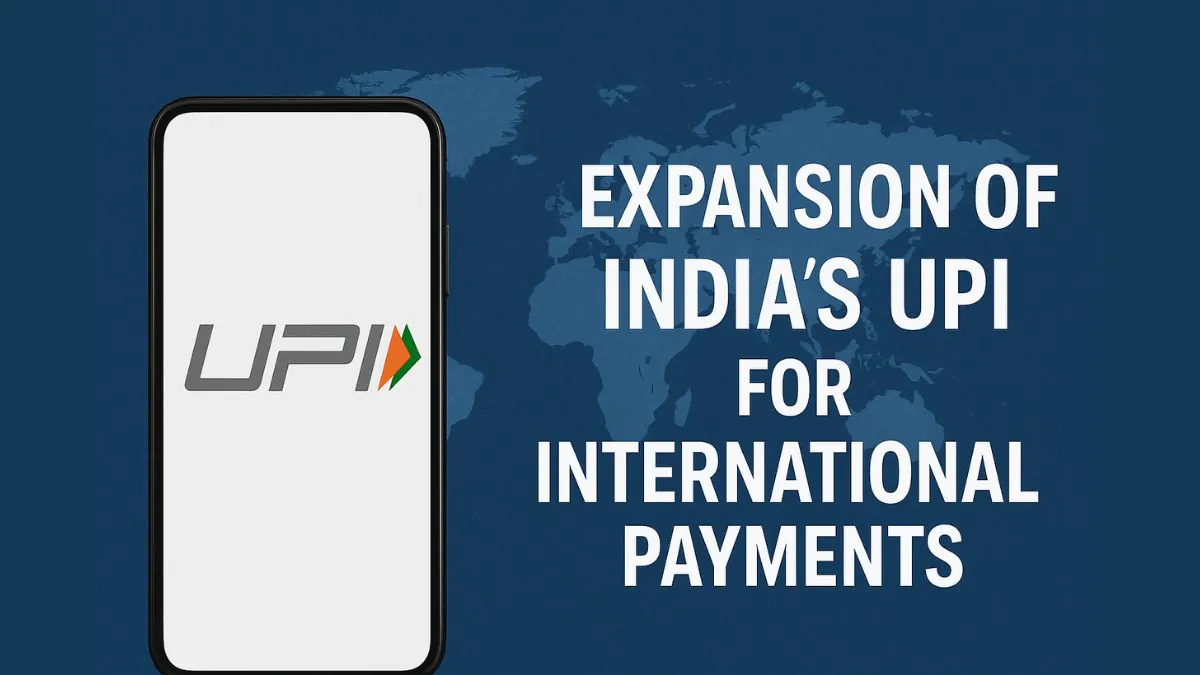Expansion of India’s UPI for International Payments

Table of Contents
ToggleShare this article ↷
India’s Unified Payment Interface, or UPI as we all call it, is no longer just a desi superstar-it’s ready to shine on the global stage! Imagine using your PhonePe or Google Pay to pay for a coffee in Singapore or send money to a friend in France.
That’s the big dream India is chasing, pushing UPI to compete with giants like Visa and Mastercard. Let’s break it down in simple terms and see how this could change the game for us Indians.
Read also: RBI Interest Rate Cuts Expected – What’s Next for India?
What’s the Buzz About India’s UPI Going Global?
UPI has already made life mast easy for us in India-paying for chai at the tapri or splitting bills with friends in seconds. Now, India wants to take this jugaad to the world. The plan? Make cross-border payments cheaper and faster.
Right now, sending money abroad or shopping internationally can burn a hole in your pocket with high fees (3-5% per transaction!). UPI could slash those costs, making it a paisa vasool deal for everyone.
The government is even talking to the Financial Action Task Force (FATF) to relax some rules, so UPI can spread its wings without too much jhikjhik. As of April 2025, UPI is already live in seven countries like Singapore, France, and Nepal. Bhai, yeh toh bada dhamaka hai!
Why This Matters to Us Indians
For the aam aadmi, this is huge. If you’ve got relatives working abroad, they could send money home without losing a chunk to fees. NRIs can pay bills in India straight from their foreign accounts-no need for an Indian number anymore. Plus, if you’re traveling, imagine scanning a QR code in Paris like you do at your local dhabha. India’s UPI could make us feel ghar jaisa anywhere in the world.
Experts at Business Standard say UPI handled 83% of India’s digital payments in 2024. With over 350 million users and lakh crore transactions monthly, it’s no surprise India wants to flex this muscle globally.
How Will It Beat Visa and Mastercard?
Visa and Mastercard charge merchants a fee (called MDR) for every swipe. UPI? Mostly free for small transactions! This zero-cost vibe has already won over India’s shopkeepers and bhaiyas. If it goes international, businesses worldwide might ditch those pricey cards for UPI’s sasta aur tikau style. The Reserve Bank of India backs this push, aiming to make India a fintech boss.
Challenges Ahead
It’s not all hunky-dory. Some countries might worry about security or rules. Plus, UPI needs more tie-ups with global banks and apps. But with NPCI (the brains behind UPI) partnering with firms like Singapore’s HitPay, the road looks promising.
Key Takeaways
- India’s UPI is eyeing a global takeover, rivaling Visa and Mastercard.
- Cheaper, faster cross-border payments could save us paisa and time.
- It’s already in 7 countries-more to come, fingers crossed!
What do you think, folks? Will India’s UPI make us proud abroad? Drop your thoughts below and share this with your dost log!
Disclaimer
Well Returns is not a financial adviser. The content provided here is for informational purposes only and is intended to offer a brief overview and general knowledge. It is not a substitute for professional financial advice. Please consult a qualified financial adviser before making any financial decisions or investments.
As of April 2025, you can use UPI in 7 countries—think Singapore, France, Nepal, Bhutan, Mauritius, Sri Lanka, and more. So, next time you’re traveling, no need to stress about cash!






